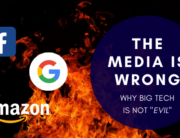First Published on T4G.com
By Jeff DeChambeau & Paul Barter
TV is better now than it’s ever been. It’s being said we’re in a Golden Age of TV. Game of Thrones, House of Cards, Orange is the New Black, The Walking Dead, Homeland, Girls, Mad Men, Louie, Justified, and of course, Breaking Bad.
There are more hours of outstanding TV than there are hours in the day. We’ve never before had so much access to incredibly high quality entertainment.
Compare this to TV in the 80s, like Magnum PI. At the time this was great TV, but only because we had nothing else to compare it to. By today’s standards it’s borderline unwatchable.
Why is that?
It turns out that the business model of TV has changed dramatically in the past 30 years.
TV in the 80s was written for one reason: to maximize advertising revenues. This led to two decisions that directly impacted the kinds of stories that would be told as well as how they were told.
ONLINE ADVERTISING IS ONLY FINALLY STARTING TO BREAK FROM THE PAST AND COME INTO ITS OWN AS A CHANNEL TO RELIABLY REACH CONSUMERS.
All TV in the 80s had commercial breaks. The stories had to be written in such a way that the viewer was on the edge of their seat at least 3-4 times during the episode. Tension was escalated to the point where the viewer just had to know what would happen next. And to find out, they had to sit through a word from the sponsors.
This business reality had a dramatic impact on the drama of the show.
Similarly, to get the best return on investment out of any new TV property, the end goal was syndication. For syndication to work, all episodes need to be more or less interchangeable, as to not confuse the viewer. This meant that the world in which these shows were set had to be relatively static.
Compare this to shows like House of Cards or Game of Thrones, which are beholden to neither commercial breaks or syndication. These shows get to tell 20 or 30 hour-long stories with higher stakes in changing worlds. And people love them.
At the same time cable shows like Mad Men, The Walking Dead, and Homeland, still beholden to advertising but buoyed by DVD sales and Netflix, are unafraid to kill of characters and change their entire world. As cable shows, viewers choose to pay a premium for this content, and so they get better content.
The way TV is delivered to consumers has changed its business model: it’s no longer about making advertisers happy, it’s about making customers happy. This means better TV and more of it.
Or, said another way, the shape of the container determines what you can put in it. The shape of TV has changed and has allowed for better TV.
This is an argument developed by Jonathan Blow, a very thoughtful game developer. His latest game, The Witness (think 1990’s Myst updated to modern sensibilities) is explicitly designed to maximize the enjoyment of the player.
In fact Blow publicly states that his goal is to make the player feel epiphanies of problem solving as much as possible. This stands in stark contrast to mobile games like Candy Crush or FarmVille, which exist to spread virally and extract money from players via microtransactions.
Again here, the shape of the container governs what you can put inside it. Here the shape is the business model behind the piece of media.
This argument isn’t just true in the context of TV and videogames. It’s also true in the context of what used to pay for TV and video games: advertising.
Advertising, specifically digital advertising, is undergoing a similar change in the shape of its container. And just as TV has gotten better and games are getting better, digital advertising is undergoing a similar transformation.
It used to be that for advertising, the shape of the container was a page in a magazine, or the segment of video that interrupts a TV show. But many companies are behaving like buying ads online is like buying ads in print or on TV.
In print, a headline’s job is to stick in your brain. Online, a headline’s job is to make you click.
While early internet ads were terrible, the code is slowly being cracked and today online advertising often times rises above being a nuisance and is actually useful. Take for example Upworthy, the socially conscious aggregator site founded by ex-Obama campaign worker and author of the filter bubble, Eli Pariser. Upworthy’s business model blurs the line between advertisement and content.
To share this content, the team at Upworthy has come up with a formula for how to write article titles and summaries that makes them especially viral on facebook. They share their formula openly. In essence, they’ve adapted to one of many new container shapes for digital advertising.
Google Adwords is another example. Broadcast and print advertising requires us to pay to advertise to everyone so that we can reach the people who might be interested in our product. For those who aren’t interested the ad still serves to “increase awareness.”
By contrast, Adwords allows us to target people who we already know are interested in what we’re trying to sell. This leads to an alignment of interest between the advertiser and the audience. If you’ve been searching for ice skates for your child, you won’t be annoyed to see Google offer you a discount on a new pair.
Online advertising is only finally starting to break from the past and come into its own as a channel to reliably reach consumers. So far as it goes as a container, we still haven’t learned all of its properties. One thing we have learned for sure is that online, we can track what works and what doesn’t.
This one small fact has a dramatic impact.
Advertising online requires different strategies and sensibilities. It’s a new container with new rules. It’s time to learn what’s possible.
Jeff DeChambeau As an analyst with T4G Research, Jeff finds and develops interesting ideas that might change the way business works. Follow him @jeffdechambeau
As VP of Research, Paul Barter works to develop high-level perspectives on the current and future state of the market. Follow him @BarterPaul









Leave A Comment
You must be logged in to post a comment.